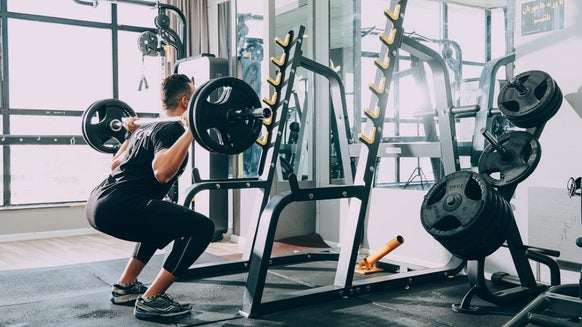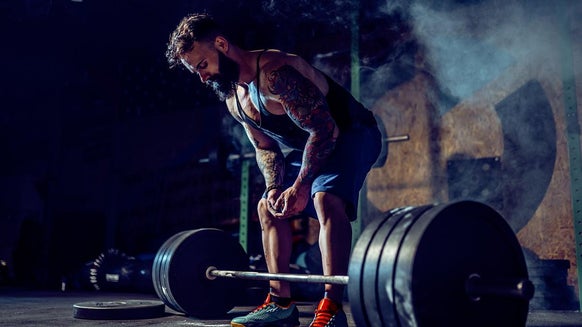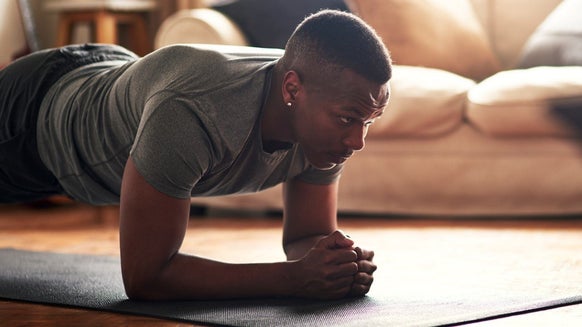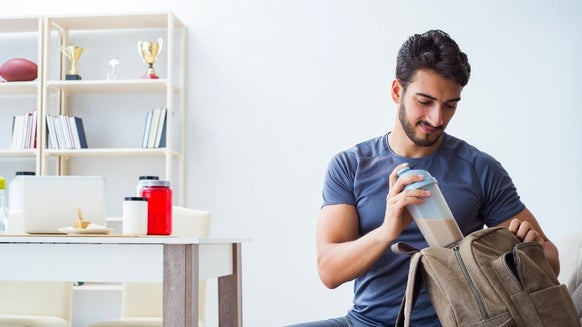The Barbell Hip Thrust Exercise | Proper Form & Lift Technique
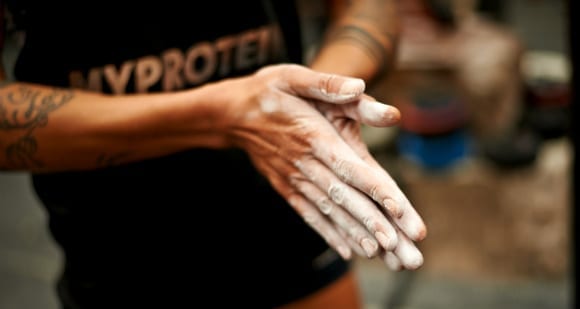
By Jamie Wykes Hobday |
www.train2gain.fitness
When training legs, it is vital to target and place a stimulating tension on the quadriceps, the hamstrings, the glutes and the calves. For the experts, you can separate these muscle groups even more so (inner quad, outter quad, gastrocnemius, soleus Muscle).
However, when training the glutes, it is vital to consider how they are typically activated far more stubbornly than any of the previously mentioned body parts.
The glutes are a large powerful muscle comprised of three areas;
1) Glute minimus
2) Glute medial and
3) Glute maximus.
They are typically a muscle that don’t fire adequately and are inactive a lot of the time. This is for many reasons but the principal two reasons are due to lifestyle and injury.
The Barbell Hip Thruster |
Benefits
Whilst exercises such as the barbell deadlift, squats, kickbacks and lunges are all efficient for glute training, one exercise that is commonly overlooked is the barbell hip thruster. The barbell hip thruster is a compound movement predominantly at the glutes section but also at the calves, hamstrings and lower back.
The main reason why the hip thruster is such a key movement is due to the fact it can empower optimal extension for an athlete. Whilst it does not correlate to the triple extension (extension at the ankle, knee and hip), it does optimise an athletes hip extension. This is rare as not many exercises do this!
This leads us to our main consideration when looking at the exercise, what benefits can we expect from using exercises such as the hip thruster?
? Burn Calories In A Short Space Of Time!
Due to the fact that the barbell hip thruster targets four muscles at once, it is licensed to be called a compound exercise. Many compound movements are metabolically demanding exercises and they drastically elevate your heart rate, this in turn will lead to increased calories burned as well as benefits to the energy systems involved.
? Injury Prevention
Sports injuries are most commonly caused by poor training methods, muscular imbalances and commonly weak/tight muscles. Due to the vast amount of time we a large part of the population spend sitting down for long periods of time, it is easy for our glutes to become deactivated and as a result, when applied to suddenly exercise; they are commonly not firing and can become injured easily.
When running, the pelvis, hips, legs and torso are all stabilised and aided by our glute strength. So when glutes aren’t firing effectively, the whole posterior and anterior chain can get massively effected and lead to an injury.
Another reason for the glutes to not be firing actively is due to tight muscles such as the hip flexors preventing the fibres within the glutes from from performing. With exercises such as bridges, bridges with leg extensions, glute kickback, squats, supermen and more being performed 2-3 times per week, injury likelihood caused by the glutes can be significantly reduced.
? Sports Performance
Training glutes with movements such as hip thrusters can be pivotal to superior sports performance. Lower body posterior chain training will be at the forefront of almost any elite athlete today. A individual's glutes are designed to pull the leg though or to extend the hip, therefore if glutes are not activating and are underdeveloped, then your strength, explosive power, agility and speed will all suffer.
What’s more, the glutes generate a large amount of power that are in turn converted and translated to key movements such as accelerating to beat a defender in football, changing direction to side step the opposition in rugby and asserting powerful movements such as jumping in basketball and leaping in the long jump. Expert research by Bret Contrera has shown that a barbell hip thrust will give an athlete a mean maximal voluntary contraction of 119%, whilst a deadlift and a squat will only give 55% and 35.6% respectively.
? Improved Posture
Our glutes play a key role in maintaining or creating good posture within the body. Without this, our hip flexors will become dominant and assert the pelvis into a tilted position that will push our backside out too far, giving us an awkward standing position or stance.
So, if we build strong glutes, we can prevent this from occurring and therefore have a good posture. Good posture will always give a good impression!
? Variation
Similar to anything in life, too much of the same thing can get boring. Performing the same barbell hip thruster every week is no exception. Try some
How To Perform The Barbell Hip Thrust
Preparation
Whilst sitting on the gym floor, ensure that a bench is directly behind you. Place the weighted barbell over your hips area - adding a barbell pad is optional as this exercise can prove to be rather discomforting in sensitive areas.
As your head is kept facing upwards, ensure that you are not lifting your neck. Your feet should firmly planted flat on the floor whilst you roll the barbell so it is directly above your hips. Whilst leaning back on the bench positioned directly behind you, ensure that both your shoulders are placed on the bench in order to stabilise your body with the bench.
Execution
The first execution phase of the movement should involve driving the barbell vertically through your feet whilst explosively extending your hips. Don’t worry about balance and losing the bar, your shoulder and heel/feet placement should ensure total body support.
Recovery
Once the bar is fully extended as vertical as possible, slowly rewind the movement until you return to the starting position.
Training Implications
The Barbell Hip Thrust | Training

Warm-Up
Lower Back, Glutes and Hamstring Foam rolling protocol.
Dynamic Glute Activation Movements (Below)
2×10 Each Leg for Single Leg Glute Bridges/ 2×5 Steps Each Direction Monster Walks With Resistance Band/ 2x15 Each Leg Glute Kickbacks
The Workout
1 Set of 5-10 bodyweight reps. Keep a weight plate between your legs to ensure total glute activation.
1 Set of 5 reps with just the Olympic barbell and safety pad.
If looking to develop Maximal Glute Strength, work at Sets of 1-3 reps, with 80-100%1RM (Of Your 1 Repetition Maximum). However, if looking to build glutes size and definition, work at Sets of 8-12 at 60-70%1RM.
Rest: For those developing strength, rest anywhere between 1.5-5 Minutes between sets and for those working hypertrophy, rest 30-90 Seconds between sets.
Post-Workout Cool Down
Low Intensity Steady State Cardio until heart rate is adequately lowered.
Glute Medial and Lower Back Static Stretches.
The Barbell Hip Thrust |
Common Mistakes

? Not generating a full extension at hips/lower back
This can often happen due to the fact that you are simply too tight at the hip flexor area (don’t worry, this is a commonly tight body part) or you are simply lifting too much and the weight should be lowered. Never sacrifice poor form.
? Elevating onto the toes
Always ensure you are driving through your heels, not your toes. Driving through the heels will not only allow you to generate more power, but it will also stabilise the movement far more and prevent the body and barbell from rocking side to side. This is the same for not placing shoulders firmly on the bench, they are there to stabilise yourself during the lift, make the most of it and thus get the most out of the exercise.
? Lifting the neck
Lifting the neck whilst performing this exercise can cause neck pains, also known as ‘Cervicalgia’. Improper cervical neck flexion can lead to vertebral prolapses or disc prolapses.
? Improper breathing techniques
Holding your breath whilst training can lead to unnecessary increased pressure as well as less power generation. Incorporating the previously mentioned breathing technique will allow more power to be generated as well as benefits to your posture, diaphragm and general structure whilst performing the exercise.
Recap on Performing the Barbell Hip Thruster
1) Always perform glute activation movements to ensure that glutes are adequately firing.
2) Place barbell over the hips, add a barbell pad to protect sensitive areas.
3) Place feet flat on the floor and roll the barbell so it’s literally directly above the hips. Ensure that both shoulders are on the bench to stabilise the body completely.
4) Drive the barbell vertically through your feet whilst extending the hips. Shoulder and feet placement should ensure total body support and balance.
5) Once the hips and bar are fully extended, rewind the movement until you return again to the starting position.
6) Static Stretches after the workout focusing on the lower back and glute medial to prevent injury likelihood.


